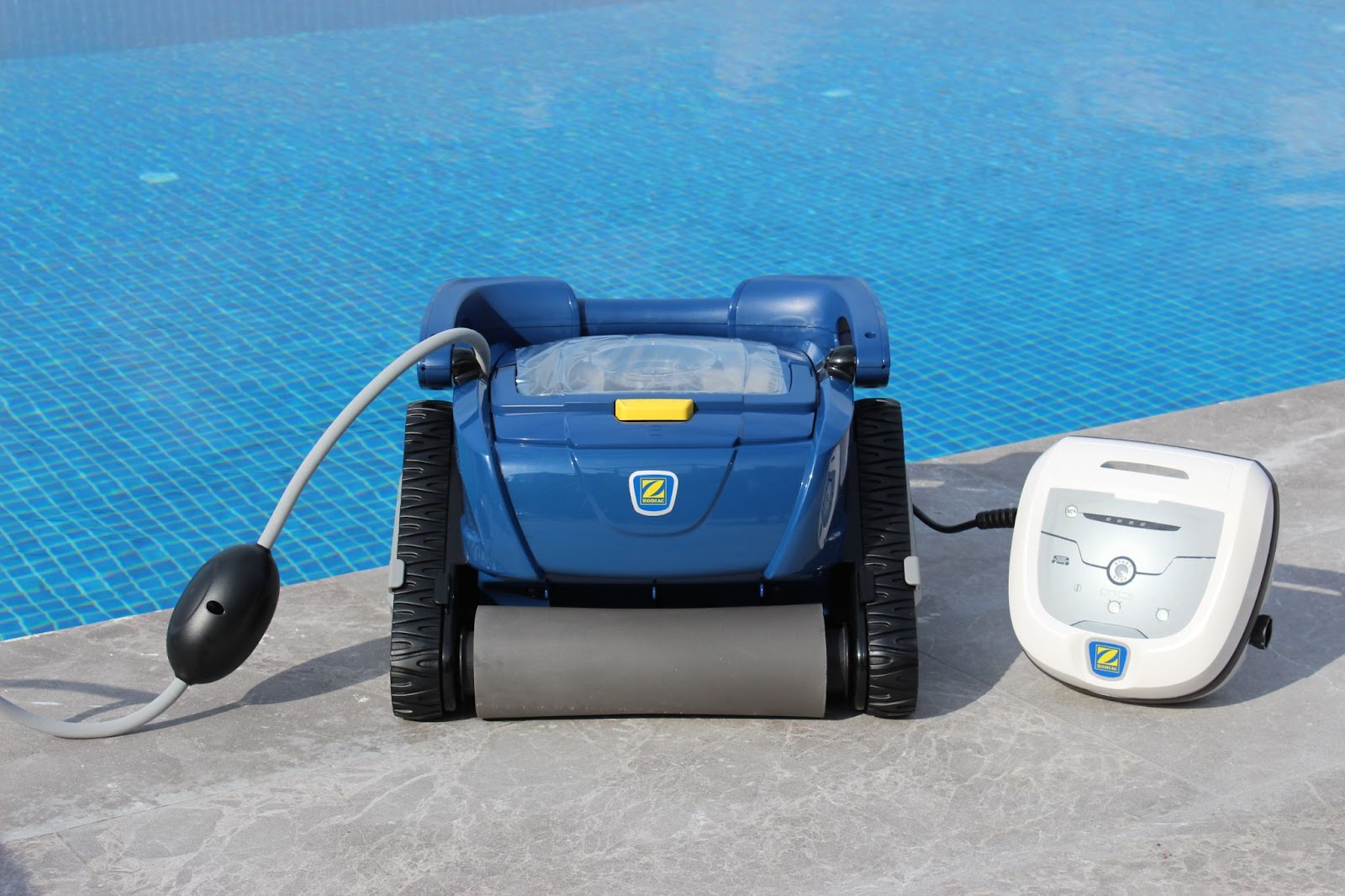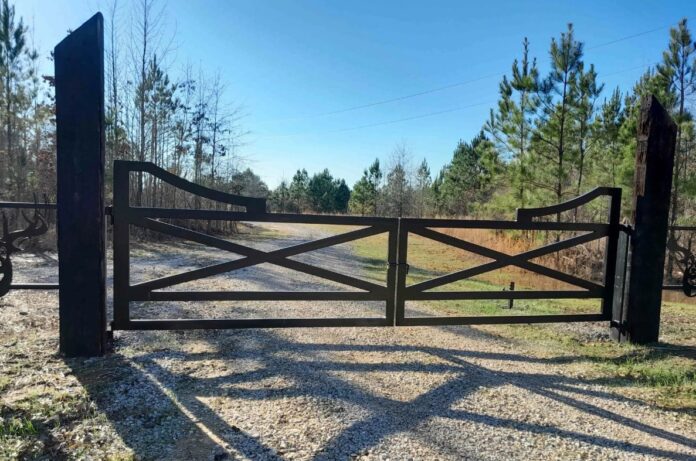Choosing the best robotic pool cleaner for your needs requires careful consideration of several factors. These considerations ensure that the cleaner you select is not only efficient but also suitable for your specific pool type and cleaning requirements. Here is a comprehensive guide to help you make an informed decision:
Pool Size and Shape
Pool Size: One of the primary considerations is the size of your pool. Each robotic pool cleaner comes with a fixed cable length, designed to cover a certain range. Therefore, it’s essential to measure your pool’s length, width, and depth to ensure that the cleaner’s cable is sufficiently long to reach every corner of the pool. The necessity for a cable of adequate length is underscored by the fact that the power supply for the cleaner typically needs to be placed at least 12 feet from the pool edge. The depth and height of your pool are also crucial factors to consider. It’s always advisable to opt for a cleaner with a cable length longer than your pool’s largest dimension to avoid any operational limitations.
Pool Shape: The shape of your pool significantly influences the cleaner’s ability to navigate and clean efficiently. Different pool shapes, such as rectangular, oval, or freeform designs, require cleaners equipped with specific navigation technologies. Cleaners designed for rectangular pools, for example, may follow different cleaning patterns compared to those intended for oval or freeform pools. The shape not only affects the cleaner’s path but also its ability to reach all areas effectively. Cleaners with advanced navigation features are often necessary for intricately shaped or irregularly designed pools.
Type of Pool: Additionally, the type of pool – whether inground or above-ground – further dictates the choice of a robotic pool cleaner. Robotic cleaners designed for inground pools typically possess more sophisticated navigation systems and are built to handle larger and deeper pools. Conversely, cleaners for above-ground pools might be less complex, reflecting the generally smaller and less varied dimensions of these pools. Matching the cleaner to your specific pool type is essential to ensure that it performs optimally and provides thorough cleaning.
Pool Surface
Different cleaners are designed for various pool surfaces such as concrete, vinyl, fiberglass, or tile. Select a cleaner compatible with your pool’s surface to prevent damage. For instance, pools with fiberglass or stick tile surfaces may need cleaners with super grip PVA brushes.
Cleaning Features
Robotic pool cleaners offer a range of features like floor, wall, and waterline cleaning. Choose a model based on your pool’s specific cleaning needs.
Gyroscopic Technology: Incorporated into newer models, gyroscopic technology marks a significant advancement in the efficiency of robotic pool cleaners. Similar to their use in aircraft and the Mars Rover, gyroscopes in pool cleaners measure linear acceleration and angular rotational velocity. This allows the cleaner to receive constant, precise information about its position, orientation, and direction, facilitating more effective cleaning coverage, superior climbing, and waterline cleaning. The integration of this technology addresses the common issue of cleaners missing spots or lingering too long in one area.
Commercial-Grade Motors: Modern robotic pool cleaners often feature commercial-grade DC motors, which strike a balance between power and energy efficiency. These motors, larger and more powerful than those in budget models, move more water, increasing suction power and enhancing debris filtration. Their efficiency leads to better wall-climbing and waterline cleaning, crucial for comprehensive pool maintenance.
Tracks Instead of Wheels: Tracks offer superior traction compared to wheels, especially on slippery surfaces like pool tiles. This design, resembling a military tank, provides constant contact with the pool’s surface, improving navigation and efficiency. It enables the cleaner to climb stairs, power over drains, and traverse underwater coves effectively. The greater traction also translates to more active cleaning, as opposed to wheels that might spin in place without making progress.
Waterline Cleaning: The ability to clean the waterline, or the “scum line,” is a significant feature. This area is prone to debris accumulation, bacteria, and algae growth. Robotic cleaners capable of consistently reaching and scrubbing the waterline alleviate the most laborious aspect of manual pool cleaning. However, not all models perform this task effectively, so thorough research and investment in quality are advised.
Multi-Media Filtration: Unlike cleaners with a single type of filter media, those equipped with multi-media filtration can handle a broader range of debris. For example, a standard filter cartridge might miss fine debris like sand, but a microfilter cartridge can capture these small particles. After a storm, an oversized leaf bag can collect larger debris efficiently. This versatility in filtration ensures that various types of pool contaminants are effectively removed.
Smart Navigation and Additional Features: Advanced models use smart navigation technology, efficiently mapping and navigating the pool for thorough cleaning. Programmable timers and remote control capabilities add convenience, allowing pool owners to schedule cleaning cycles and adjust settings remotely. Swivel cords are another innovative feature that prevents tangling during operation, ensuring smooth and uninterrupted cleaning. Easy-to-clean filters are essential for minimizing maintenance while maintaining optimal performance
Filtration System
The filtration system of robotic pool cleaners plays a pivotal role in maintaining pool hygiene. These systems typically comprise fine mesh or pleated filter cartridges capable of capturing both large and small particles, ranging from leaves to microscopic debris. Some models offer various filtration options, allowing customization based on the size of the debris typically found in the pool. The effectiveness of these systems in trapping and removing contaminants ensures crystal-clear water, contributing significantly to the overall cleanliness and safety of the swimming environment
Suction Power and Micron Value
The suction mechanism of robotic pool cleaners, generated by the pump motor, is fundamental to their operation. This suction draws in water and debris, which are then filtered. Adjustable suction power allows these machines to accommodate different types of debris, ensuring optimal performance. The micron value of the filters is crucial; the smaller the micron value, the finer the debris the filter can trap, leaving the water exceptionally clean.
Energy Efficiency
Robotic pool cleaners are designed to be energy-efficient, typically using low-voltage power and consuming less energy than traditional pool pumps. This efficiency translates to cost savings on electricity bills and makes these cleaners an eco-friendly choice, reducing overall energy consumption and the carbon footprint.
Warranty and Build Quality
When selecting a robotic pool cleaner, it’s important to consider the build quality and warranty. A high-quality build ensures durability and long-lasting performance, while a solid warranty offers peace of mind and protection against potential issues. These factors are critical investments in ensuring the longevity and effectiveness of the cleaner.
Budget
The cost of robotic pool cleaners varies, with entry-level models starting around $300 to $500, offering basic features suitable for smaller pools. Mid-range cleaners, equipped with advanced features, range from $600 to $1,000, while high-end models can cost upwards of $1,000 to $2,000 or more. Balancing the desired features with your budget is key to finding the most suitable cleaner for your pool’s specific needs.
Advanced Features

Smart Navigation: Utilizes sensors and algorithms to map the pool’s size and shape, optimizing cleaning paths and avoiding obstacles. Some models adapt their cleaning paths based on previous cycles for increased efficiency.
Control Options: Includes remote control or app-based interfaces for customizable cleaning schedules and modes, and even manual steering of the cleaner.
Automatic Shut-Off and Retrieval: Features automatic shut-off after the cleaning cycle and, in some models, built-in retrieval systems for easy removal from the pool.
Additional Features: May include gyroscopic navigation systems for systematic coverage, water quality sensors, and integration with smart home systems for enhanced control and convenience.
Conclusion
In addition to these factors, it’s beneficial to consult comprehensive resources for further insights and comparisons. The Intexpoolpumps website is one such platform where you can find detailed comparisons of the best models of cleaning robots, helping you make a well-informed choice.
In summary, selecting the best robotic pool cleaner for your pool involves a careful evaluation of various factors like pool size, surface, cleaning features, filtration system, suction power, energy efficiency, and budget. By considering these aspects, you can invest in a cleaner that meets your specific needs and ensures a sparkling clean pool with minimal effort







